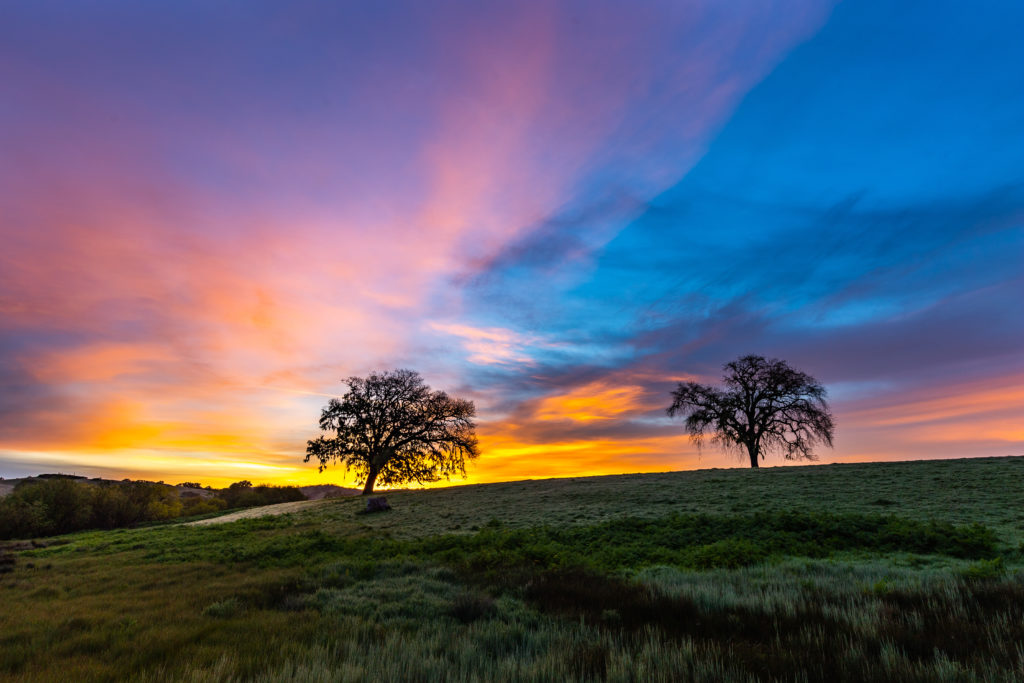In February, the Conservancy’s Grazing Team attended the Society for Range Management (SRM) Annual Meeting. Trading The Preserve’s mild winter and ocean views for a snowy Denver, we spent a week connecting with and learning from the greater range community. For those of us who spend our days out on the grasslands, and their grazed subsets often referred to as rangelands, this conference presented us with an abundance of opportunities to see the work and advancements of government agencies, university and conservation programs and for-profit producers. Additionally, it gave us a rare opportunity to geek out over grasses and livestock with a larger community of practitioners that rarely has the time, or opportunity, to leave the field. With the conference now a few weeks behind us and with the chance to reflect upon our experience, three central themes have stuck with me: visibility, connection and collaboration.
In the briefest of terms, it is important for our team to be visible to the larger range and grassland management community. Firstly, the Conservancy is in the midst of conducting some of the most progressive grazing techniques and monitoring in conservation. Secondly, and of equal importance, our team represents a diversity—intentionally created by and reflective of the larger Conservancy team—not often seen in cattle programs. Looking at our team (Rodrigo Sierra Corona, Dayna Cormany and me), we are an unusual crew for a field where women and people of color tend to be passed over or viewed as the second choice. With our emphasis on non-permanent and moveable watering and electric fencing, low-stress and on-foot livestock management, we serve as walking examples of the power, both physical and otherwise, of a diversified team.
This year was the first year that the SRM meeting emphasized diversity—in projects, thoughts, collaborations and cognitive approaches. In this way, the presence of the Santa Lucia Conservancy served a reciprocating purpose. We, naturally, learned from the greater SRM community, but hopefully, as the science and field move forward, we look to represent the exciting outcome when innovation and diversity are simultaneously embraced.
The range is, for many of us, a solitary place. This fact, imposed by the sheer magnitude of the landscapes upon which we work, exacerbates the need for connection between all members of the field. Range science is particular in the way that it combines a diverse group of participants: university students and professors, conservationists, the Forest Service, the Bureau of Land Management, the USDA, non-profits, for-profit producers and landowners. Despite a vast array of goals, each of these parties collects data, implements projects and records findings. Additionally, we deal with the shared complications of development, drought and wildfire.
Our field depends upon our ability to connect across our landscapes. Alone, we have merely the ability to impact our relatively small parcels of land. Together, we can shape the future of the West.
This brings me to my final takeaway—collaboration. As the Conservancy already understands, by embracing our diversity and making use of the connections that tie us together as a field, collaboration becomes not only possible but our most promising tool for advancement. In the words of one speaker from my alma mater, Cornell University, “Collaboration is a methodology of hope.” When we work together, we are working on the fundamental assumption that our combined efforts will bring us somewhere greater than were we to set out alone. Looking at a future defined by unprecedented challenges, the importance of combining our strengths will become increasingly essential.
Range science, like so many fields, is one where the days are long, and the results can be slow. However, upon returning to The Preserve this past week, I have been struck by my new-found deep appreciation for all that we have accomplished to date. The Preserve’s fields are bursting with perennial bunchgrasses, the ecotones where cattle have grazed look stable and orderly, our ponds and creeks are teeming with life and frog songs. With this appreciation, too, has come a fine-tuned ability to see areas we can improve upon—innovations for our grazing fuel management, cattle raised for our particular landscape, increased species-targeted grazing. With fresh legs after a week of learning, the Conservancy’s grazing team looks at this year brimming with the excitement of possibility. With continuing projects, exciting partnerships and an expanded community, we have set ourselves up to continue the innovative path of our Conservation Grazing Program and increase its impact both close to home and farther afield.
By Phoebe Hering
